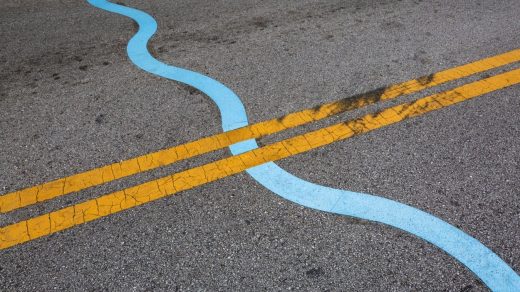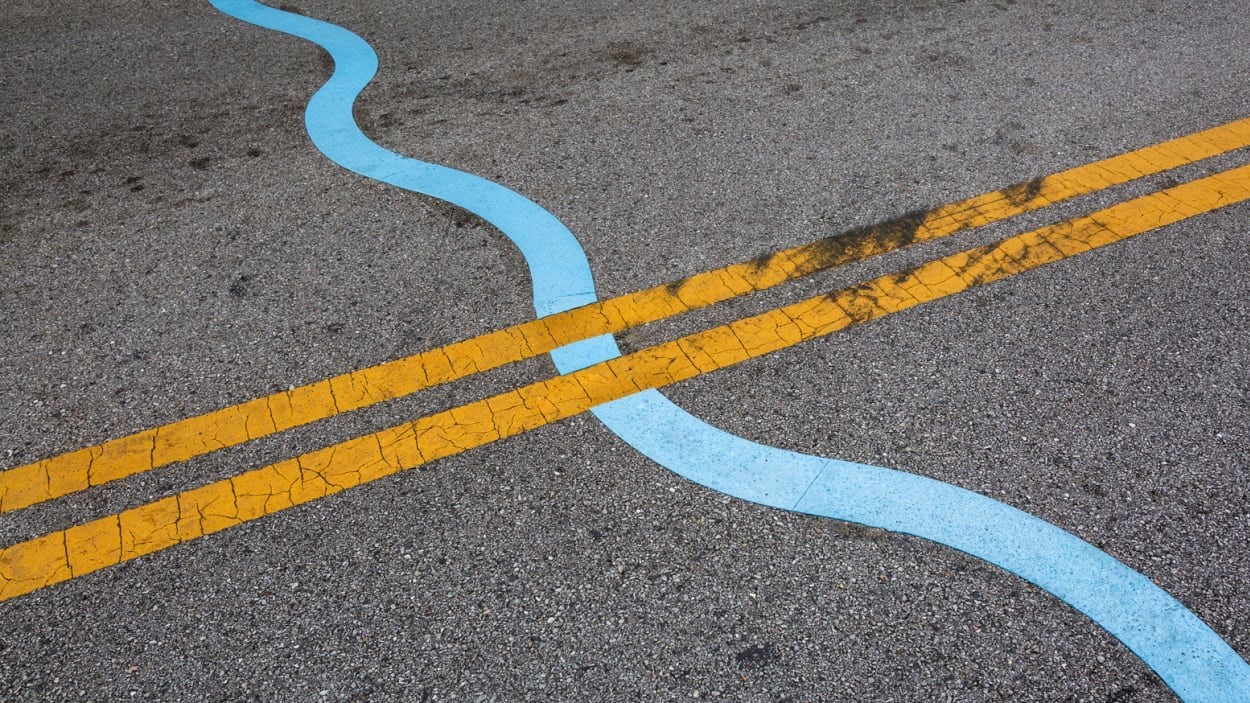Baltimore buried this river a century ago. Now, an artist is bringing it back to life
Bruce Willen was looking at an 1890s map of Baltimore when he noticed something unexpected: There had been a creek running through the middle of his neighborhood, just a few blocks from his house; but today, that creek is nowhere to be found. It had been buried in the early 1900s.
Willen, a designer who runs a local practice called Public Mechanics, was familiar with the concept of “buried rivers,” which exist everywhere from Mexico City to New York City to London, but he was baffled to learn there once was one right next to his house. So, when the pandemic hit a few years later, he set out to resurface the stream—if not physically, then in people’s minds.
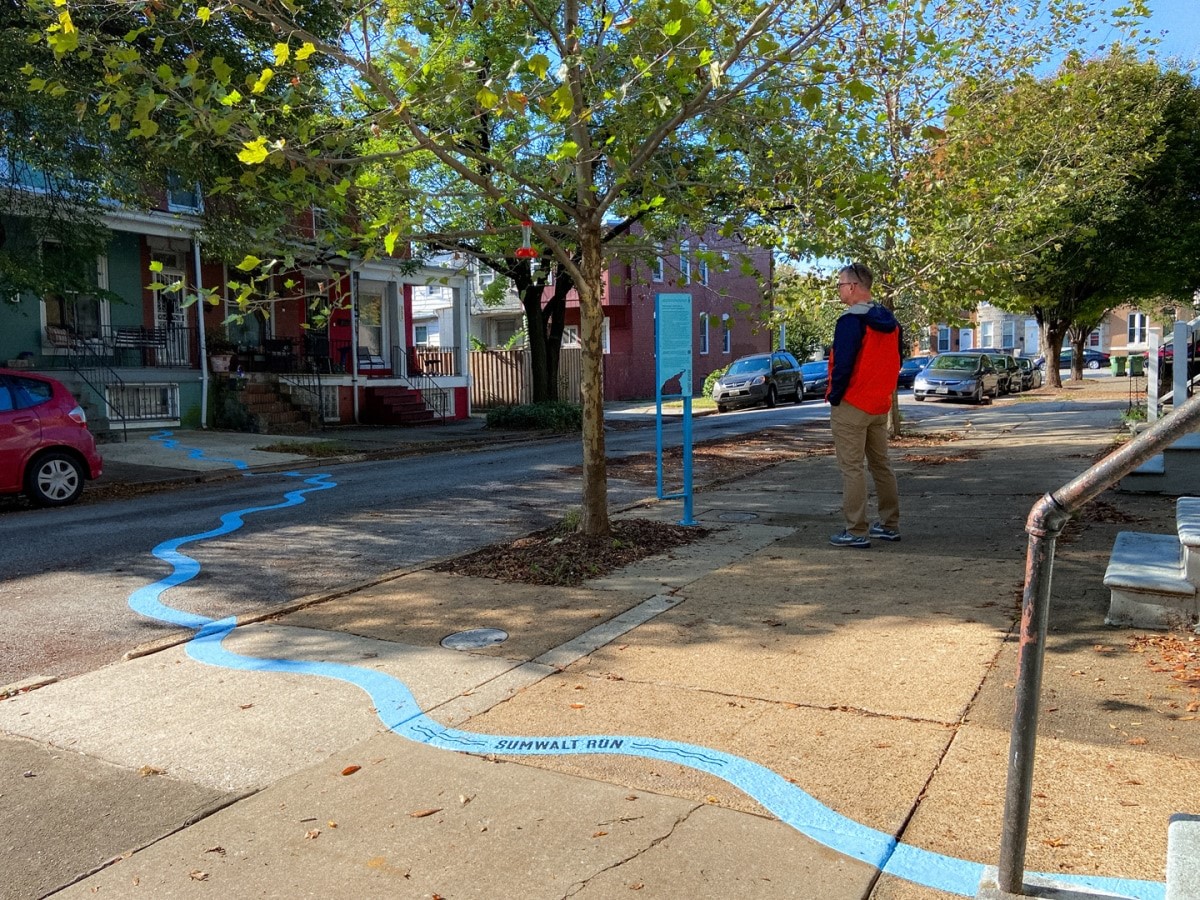
Today, anyone walking through the hip neighborhood of Remington in Baltimore will know the area was once bisected by a creek called the Sumwalt Run. That’s because Willen dug through archives and used various historic maps as a reference point to then overlay the city’s streets and sidewalks with a sinuous path that makes the vanished creek visible again.
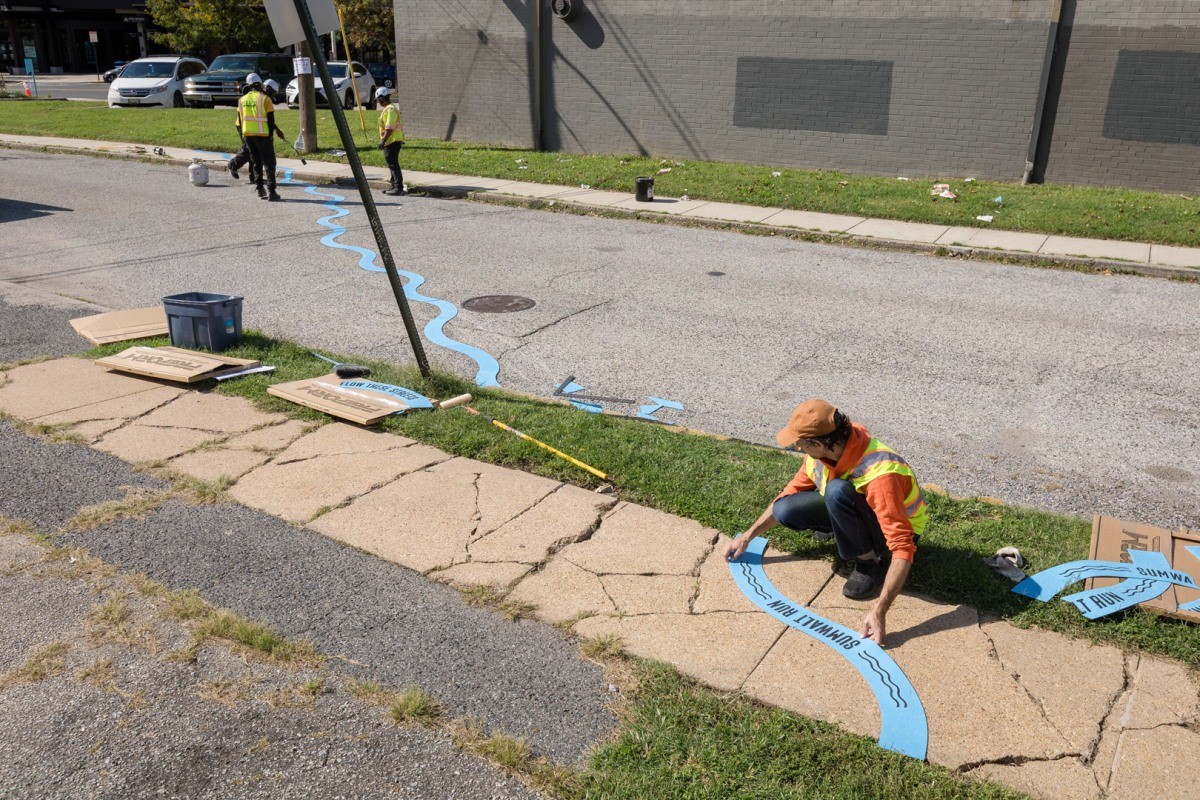
The art project, which is called Ghost Rivers, covers a 1.5-mile stretch of the stream. The overlay is made of preformed thermoplastic, which is the same material that is used to demarcate bike lanes and is therefore more durable than a simple paint job.
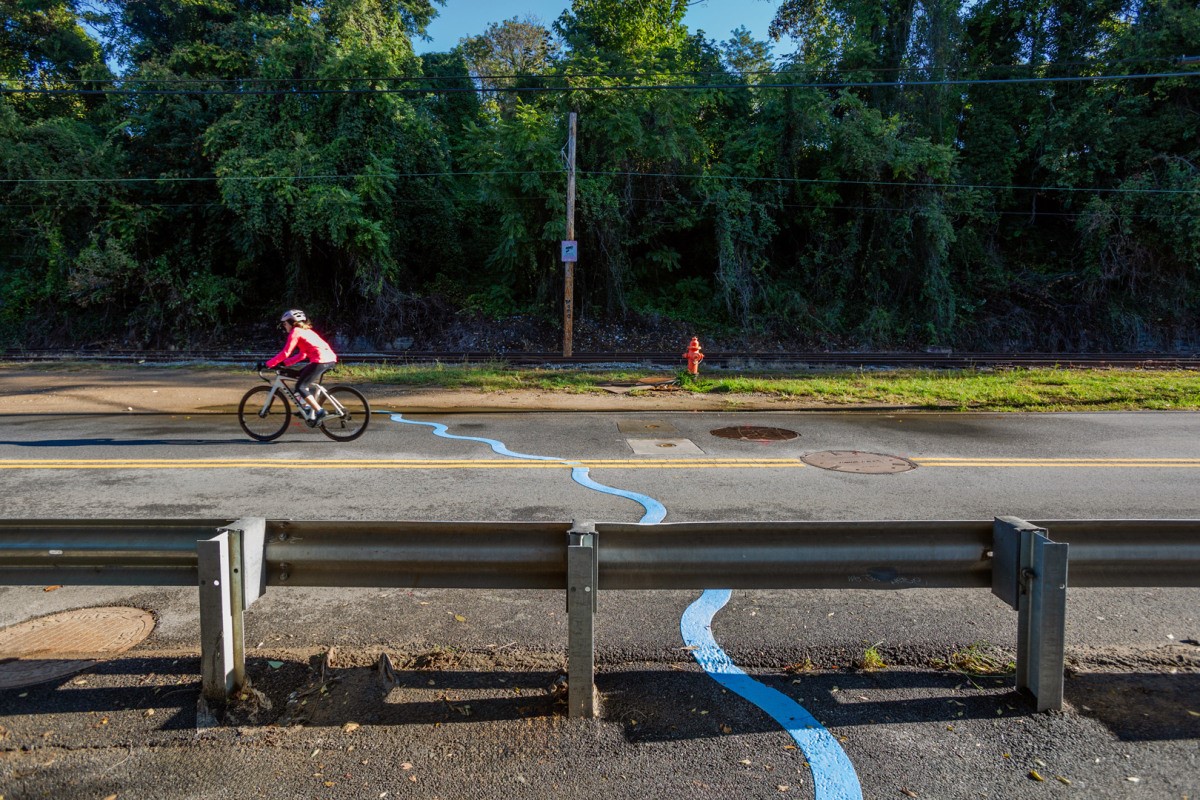
When Wallen first started working on Ghost Rivers, he said that only a handful of the residents he spoke with knew the Sumwalt Run existed. Now, people can learn all about it on self-guided walking tours of the neighborhood that take a little over an hour to complete (or by visiting a gorgeous website that Willen created for the occasion). The designer has also partnered with Blue Water Baltimore, a nonprofit that promotes green infrastructure in the region and will use the project as a teaching tool about the city’s watershed.
The story of the Sumwalt Run is the story of many streams in America. Researchers at the University of Maryland found that Baltimore has buried 66% of its streams—including parts of the Jones Falls that now flow beneath I-83. Detroit has lost 85%. Philadelphia? 73%. There are no nationwide figures, but Gary Belan, senior director of clean water supply at the nonprofit organization American Rivers, estimates that there are millions of miles’ worth of streams currently flowing beneath our feet.
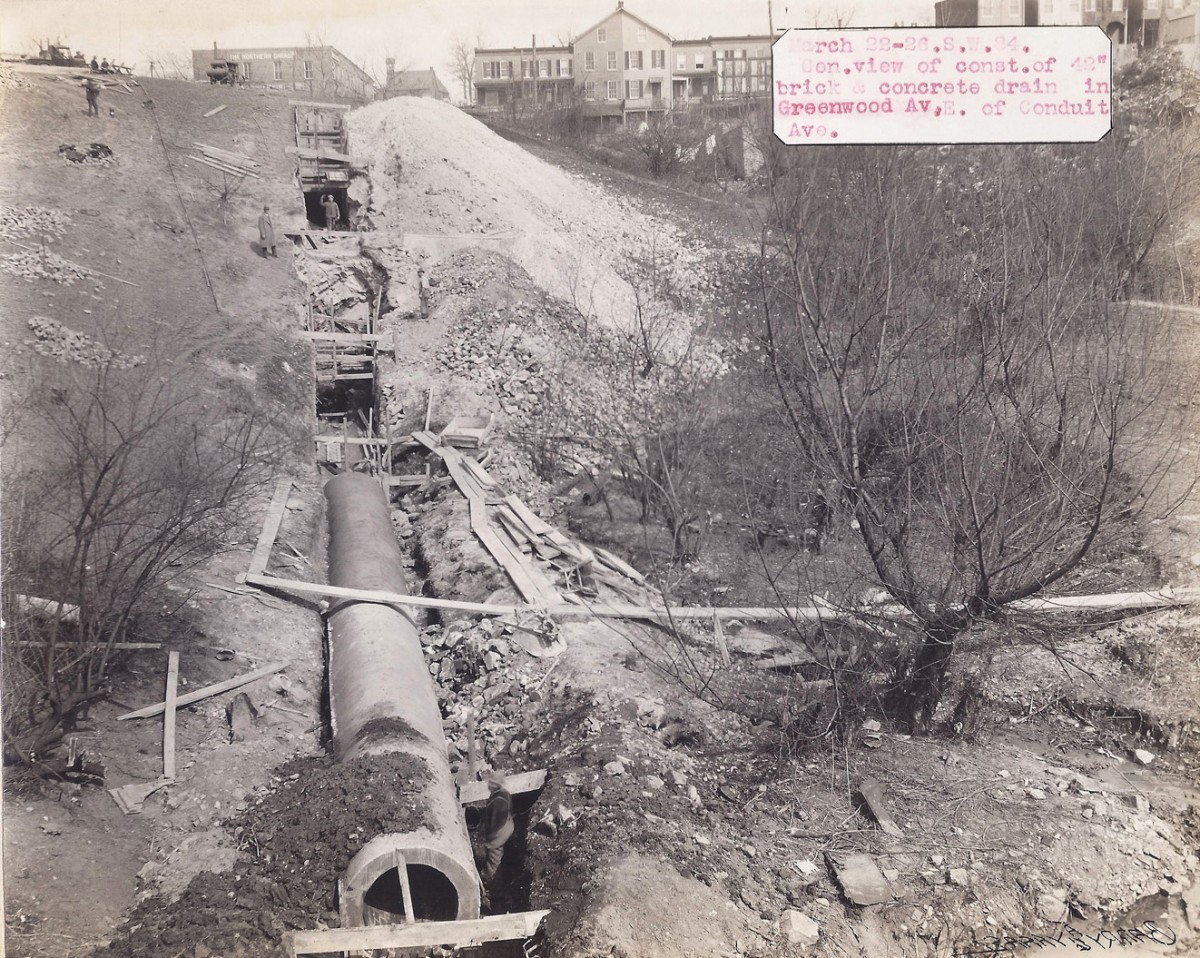
The main culprit, he says, is urbanization. It’s a well-known fact that many civilizations grew around a source of water; but the more we built, the more we took from nature. In the U.S., the practice of burying rivers goes back to the late 1800s, when the share of people living in urban areas increased sixfold to 60%, urbanization accelerated to match the demand and disease-ridden waterways were tucked into underground sewers.
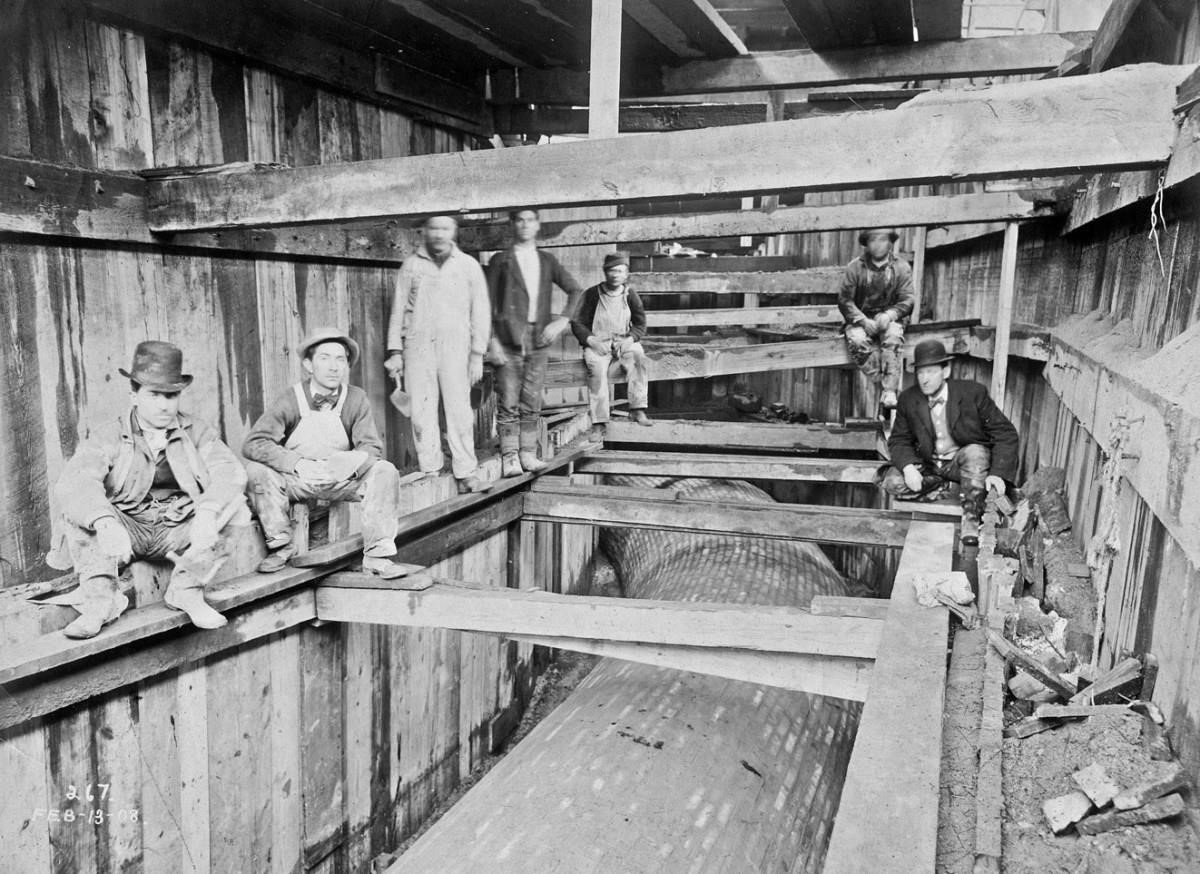
At the time, Belan says the predominant philosophy was to control nature by diverting streams, entombing them inside culverts and compressing them into pipes. Sewers revolutionized public health and sanitation in cities, but that 19th century solution, however innovative, is no longer fit for 21st century woes like flash floods and superstorms that dump tons of rainwater into centuries-old pipes.
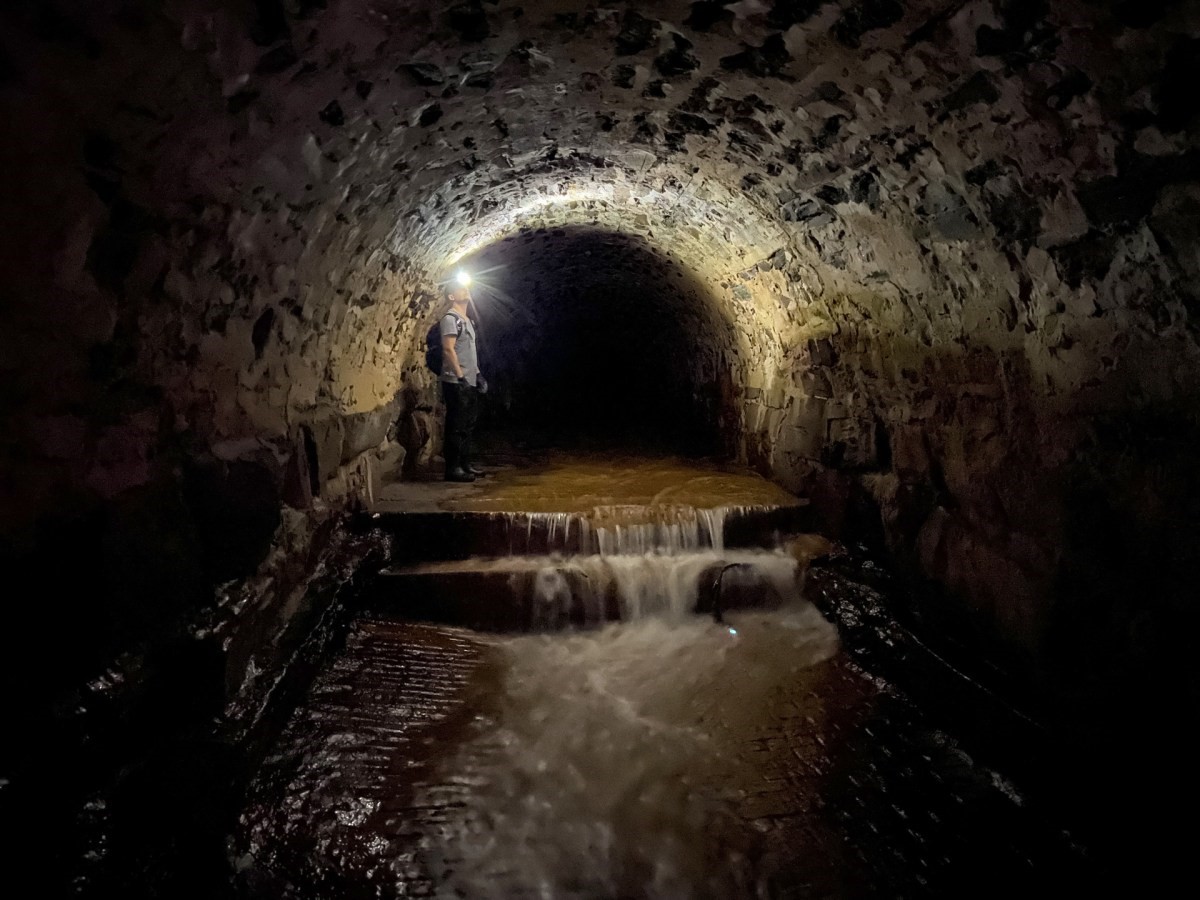
The problem is based on pure physics: when cities have a combined sewer system (as way too many American cities do, particularly in the Northeast) these pipes have to carry both sewage and stormwater runoff. And when climate change causes more intense and more frequent storms, there is nowhere for that stormwater to go but to back up, swallow buildings inside sinkholes, or even burst through manholes in the form of sewer geysers.
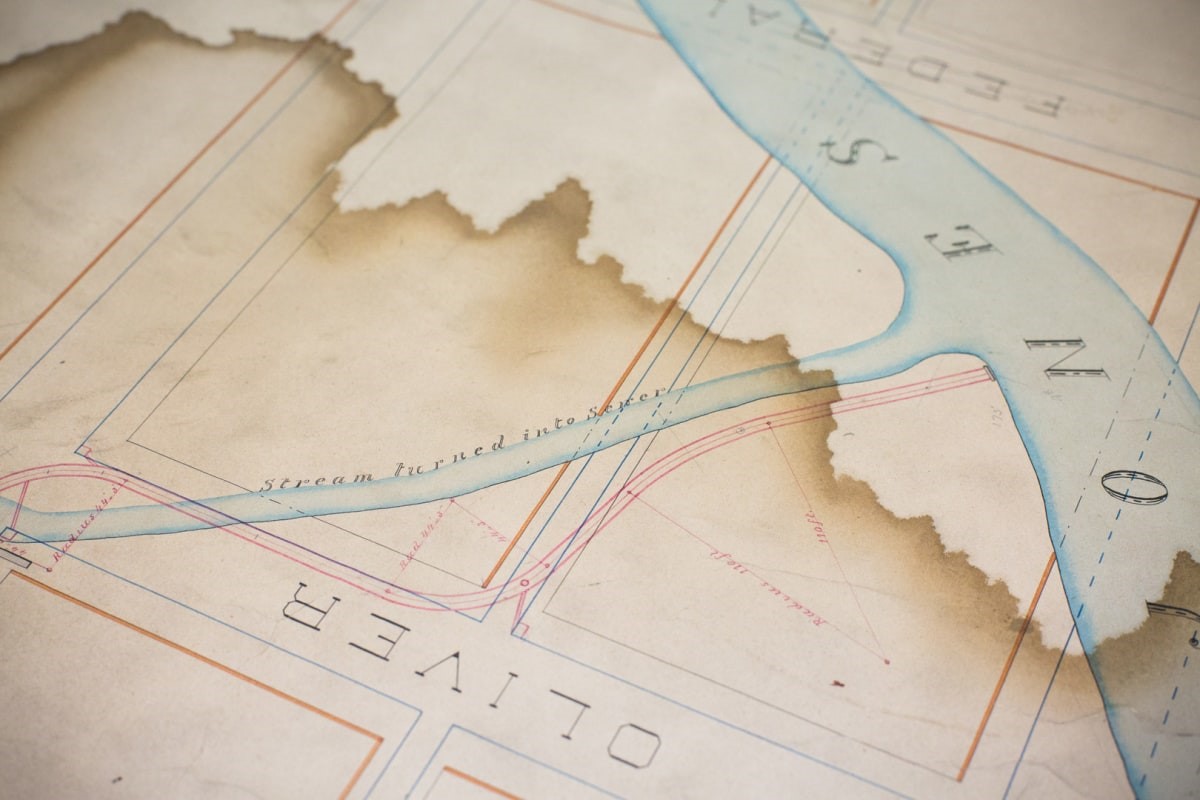
The sad reality has led many American cities from Boston to North Carolina to exhume, or daylight, rivers that were once buried. This isn’t realistic with Baltimore’s Sumwalt Run as daylighting the stream would mean displacing residents and disrupting an entire neighborhood, but for the Ghost Rivers’ designer, it’s an opportunity to rethink nearby streams, like the one flowing under the I-83, a highway built in 1961 that is nearing the end of its lifespan.
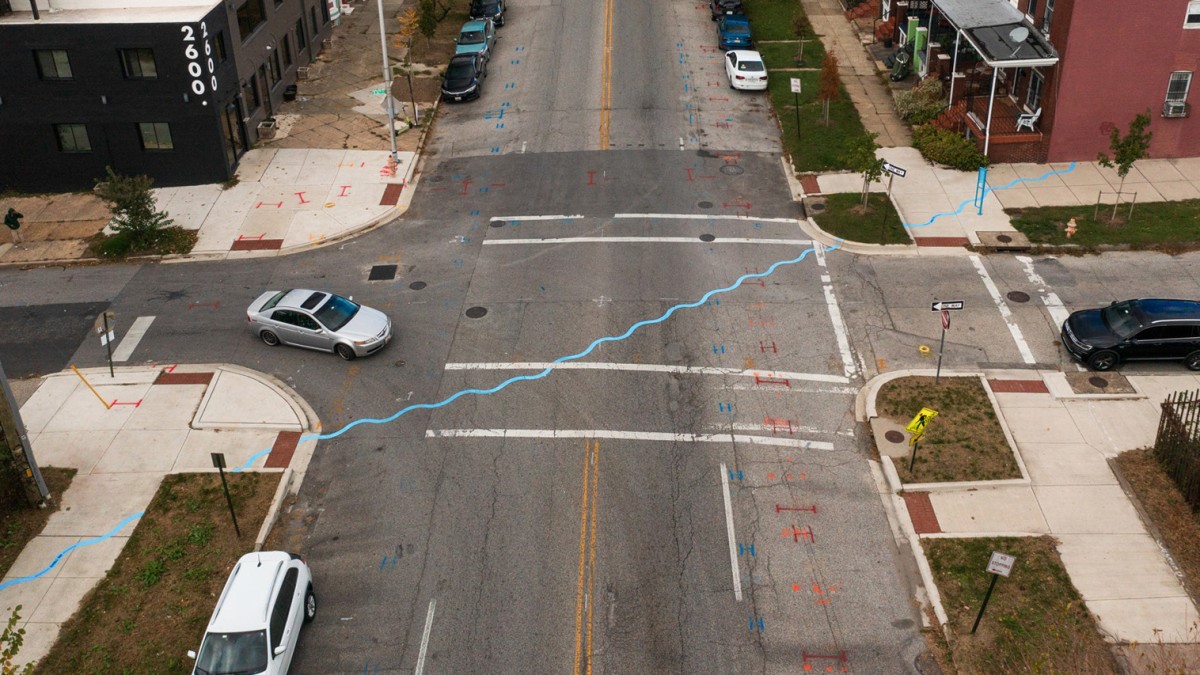
“There’s going to be a point in the next 10 or 15 years where the city, the state will have to decide: do we want to spend $500 million to rebuild this highway or do we want to put that money into opening up this river and restoring some elements of the original landscape,” says Willen, who described the process of taking a complex natural living system and entombing it in an underground concrete cylinder as “hubris.”
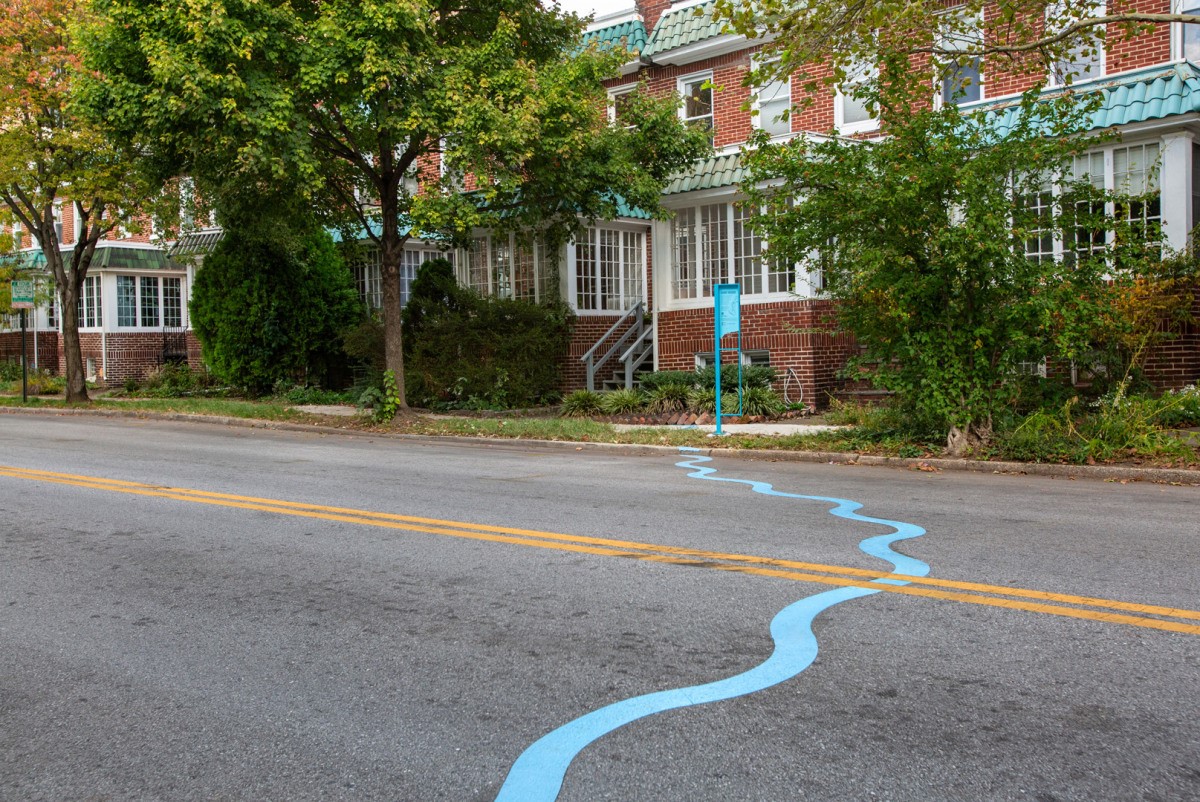
Ghost Rivers is a beautiful tribute to the waterways that make up our cities—and a welcome reminder that water is never as far away as it seems. “How do we get people to understand that everybody has a connection to water even if we can’t see it,” says Belan. “If we can show people how close they are to these things, then maybe people will have a better appreciation for the rivers that are still there, for the water bodies in our harbor that they’re close to, and maybe they will think about how to protect the water resources we do have.”
(8)

